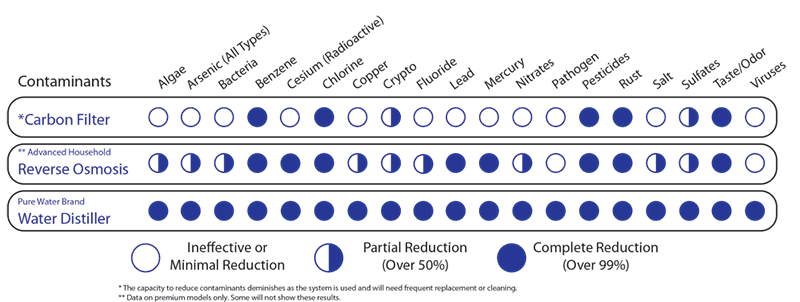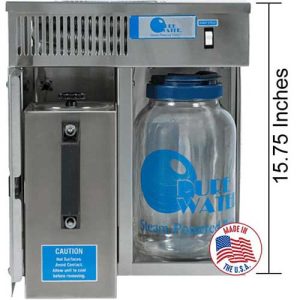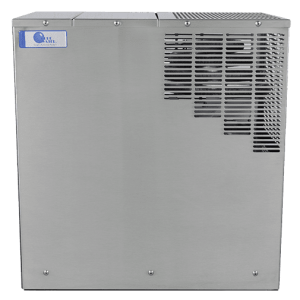The Differences Between Distilled Water and RO Water
Water quality is one of the most overlooked aspects of health and home maintenance. Across the U.S., millions of people rely on tap or well water that may contain trace levels of minerals, chemicals, or other impurities. Although most public utilities meet federal safety standards, issues like aging pipes, agricultural runoff, and PFAS (“forever chemicals”) have increased public concern about what’s really in our water.
That’s why many households turn to purification systems. Among the most effective methods are distillation and reverse osmosis (RO). Both produce much cleaner water than typical filtration pitchers or faucet filters—but they work in very different ways and produce different results.
What is Reverse Osmosis?
Reverse osmosis is a highly efficient filtration process that uses pressure to push water through a semi-permeable membrane. The membrane has microscopic pores small enough to let water molecules pass but large enough to block dissolved salts, heavy metals, and other contaminants.
- A standard RO system typically includes several stages:
- Pre-filter: removes sediment, dirt, and rust.
- Carbon filter: captures chlorine and certain chemicals that affect taste and odor.
- RO membrane: removes most dissolved solids and contaminants.
- Post-filter: polishes the water before use.
Depending on design, some systems include remineralization filters to improve taste. RO units can remove many common contaminants.
However, RO systems can waste several gallons of water for every gallon produced (newer models are more efficient). They also require periodic filter replacements to maintain a higher level of performance.

Why Homeowners Choose Reverse Osmosis
Reverse osmosis is popular because it delivers reliably clean, good-tasting water for drinking and cooking. People often install RO systems to:
- Improve the taste and odor of tap water.
- Reduce exposure to trace metals and chemical residues.
- Remove minerals that cause scale buildup.
- Support other purification systems such as UV sterilizers or softeners.
What is Distilled Water?
Distillation purifies water through heat. In a home distiller, water is boiled, turning into steam. The steam rises, leaving behind most impurities, minerals, and microorganisms. The vapor then cools and condenses back into liquid—now as nearly pure H₂O.
Because distillation mimics nature’s hydrologic cycle (evaporation and condensation), it effectively removes:
- Bacteria and viruses (killed during boiling)
- Heavy metals
- Salts and dissolved solids
- Nitrates
- PFAS and many organic chemicals
- Microplastics and particulates
Many home distillers also include a post-carbon filter to catch any volatile organic compounds (VOCs) that could evaporate along with steam. This final polishing step ensures exceptionally pure water.
How Distillation Differs from RO
Both processes produce high-quality water but differ in method, maintenance, and waste.
| Feature | Reverse Osmosis | Distillation |
|---|---|---|
| Process | Pressurized filtration through a membrane | Boiling, evaporating, and condensing |
| Contaminants Removed | Some salts, metals, chemicals, and some microbes | Nearly 100% of dissolved solids, microbes, and metals, plus VOCs (with carbon post-filter) |
| Energy Use | Low to moderate (uses water pressure) | Higher (uses heat) |
| Water Waste | Discards 2–4 gallons per gallon produced (varies by system) | No water waste |
| Maintenance | Filter changes every 6–12 months | Simple cleaning, occasional carbon filter change. Easy to own and use. |
| Purity Level | Depends on the contaminants in the water. | Extremely high—up to 99.9% pure |
| Taste | Light, clean taste | Neutral, crisp, “pure” taste |
| Upfront Cost | Moderate | Moderate to high |
| Operating Cost | Filters and wastewater | Low cleaning and power use |
Is Reverse Osmosis Water Safe to Drink?
Yes—RO water is safe and widely used in homes, hospitals, and food production. It meets or exceeds EPA standards for drinking water when maintained properly. However, some gases and very small organic compounds can pass through membranes, though usually at trace levels.
One practical drawback is wastewater. Traditional RO systems can waste several gallons for each gallon produced, though new designs have improved efficiency. Regular maintenance and timely filter changes are essential to keep performance high and to prevent contaminants from entering your drinking water.
Is Distilled Water Safe to Drink?
Distilled water is among the purest forms of drinking water available. Because it removes nearly all dissolved solids, it has a neutral taste and leaves no residue when boiled or frozen.
There’s sometimes confusion about whether distilled water “removes minerals your body needs.” In reality, minerals in drinking water contribute minimally to total nutrition. The body obtains essential minerals primarily from food, not water. Distilled water simply provides clean hydration without additives.
It’s also preferred in contexts where purity is critical—like laboratories, medical equipment, or steam appliances—because it prevents mineral buildup.
Environmental and Practical Considerations
Both systems have trade-offs:
- Reverse osmosis consumes water but uses less electricity.
- Distillers consume electricity but waste no water.
From a sustainability standpoint, owning a distiller or RO system reduces dependence on single-use plastic bottles. Over time, both are far more eco-friendly than bottled water.
If you live in a drought-prone area, distillation’s no-waste process may be more appealing. Moreover, distillation is the frontrunner if you want the most consistently pure water.
Maintenance and Lifespan
RO System Maintenance
- Replace pre- and post-filters every 6–12 months.
- Replace the membrane every 2–3 years.
- Periodically sanitize storage tanks.
Distiller Maintenance
- Clean boiling chambers periodically to remove scale.
- Replace carbon filters as directed.
- Inspect for mineral buildup, especially with hard water, or use a water softener to keep mineral buildup at a minimum.
- A high-quality stainless-steel distiller, such as those from Pure Water, can last decades with minimal maintenance.
Cost of Ownership
Reverse Osmosis: Lower initial cost, ongoing filter replacements ($50–$200 per year), occasional service calls, and some water waste.
Distillation: Slightly higher purchase price but minimal recurring costs—just cleaning and carbon filter replacements. Energy cost per gallon is roughly 10–30¢, depending on electricity rates.
Over the long term, distillers often provide lower lifetime costs, especially for households using several gallons per day.
Choosing Between RO and Distillation
If your goal is the highest level of purity and consistency, distillation provides the cleanest water available for home use.
Before choosing, it’s wise to:
- Check your local water quality report or conduct a home water test.
- Identify contaminants of concern (like lead, nitrates, PFAS, or arsenic).
Final Thoughts on Distillation vs Reverse Osmosis
Both distillation and reverse osmosis are proven, effective ways to ensure cleaner, safer water, but water distillers consistently produce higher-purity water and maintain that level over time.
If purity, durability, and simplicity matter most, a Pure Water home distiller offers long-term peace of mind and the satisfaction of knowing exactly what’s in your glass.
Frequently Asked Questions
Q1. Does distilled water remove minerals my body needs?
No. While distillation removes dissolved minerals, drinking water contributes only a small fraction of daily mineral intake. Most minerals come from food, not water.
Q2. Which system removes more contaminants—RO or distillation?
Distillation generally achieves higher purity levels by eliminating dissolved solids, bacteria, and many chemicals that RO may not fully remove.
Q3. Why does RO water sometimes taste different?
RO systems remove chlorine, minerals, and other elements that affect taste. Some users add a remineralization filter to achieve a more familiar flavor.
Q4. How often do I need to maintain these systems?
RO filters should be replaced every 6–12 months and membranes every few years. Distillers mainly require periodic cleaning and carbon filter replacement.
Q5. Is distilled water better for appliances?
Yes. Because it contains no minerals, distilled water prevents scale buildup and extends the lifespan of kettles, humidifiers, and other devices.










